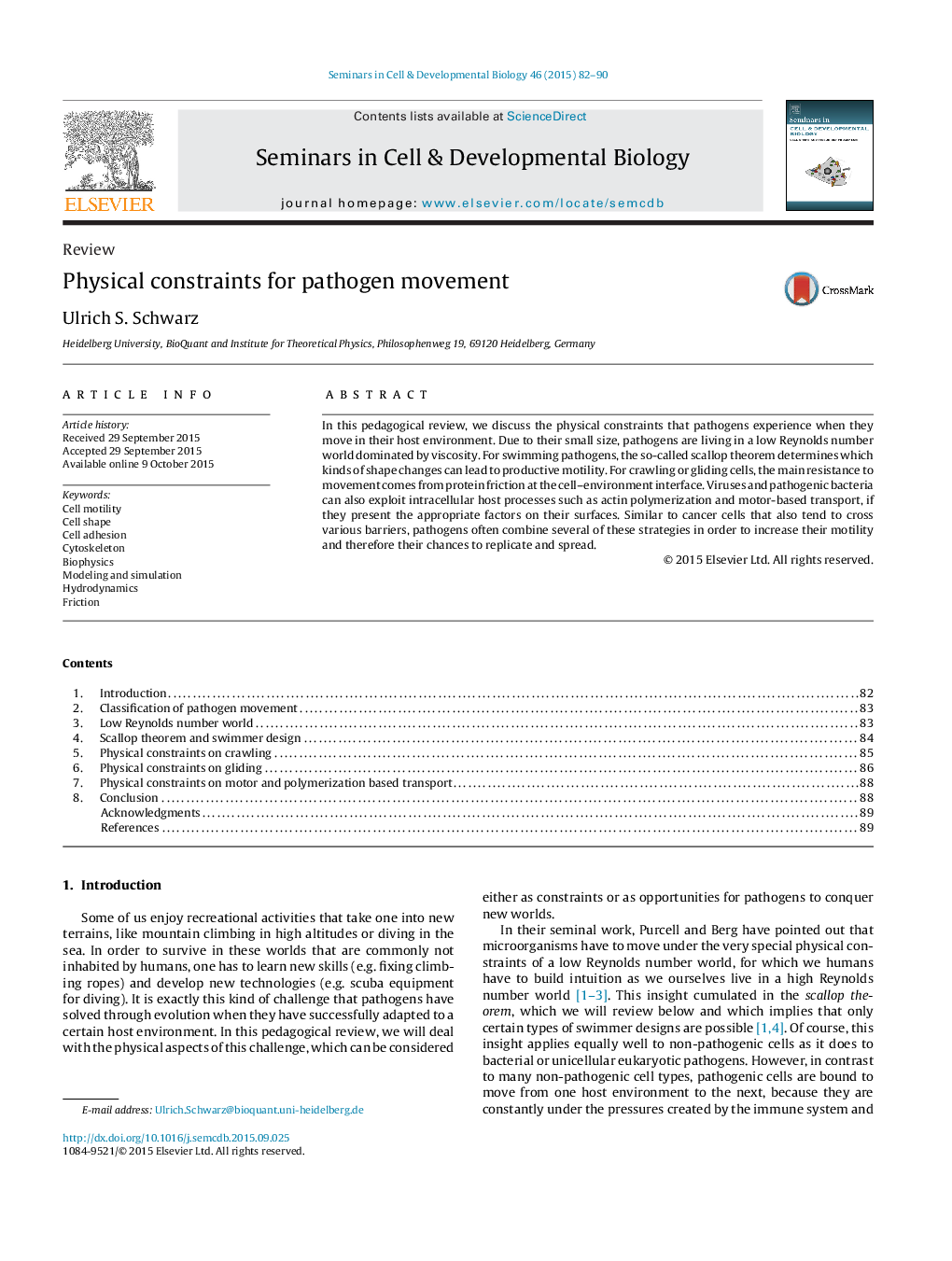| Article ID | Journal | Published Year | Pages | File Type |
|---|---|---|---|---|
| 2202544 | Seminars in Cell & Developmental Biology | 2015 | 9 Pages |
•Physical laws strongly restrict the ways in which pathogens can move.•Swimming pathogens have to use non-reciprocal motion.•Crawling and gliding pathogens have to overcome protein friction.•Viruses and small bacteria can exploit intracellular transport processes.
In this pedagogical review, we discuss the physical constraints that pathogens experience when they move in their host environment. Due to their small size, pathogens are living in a low Reynolds number world dominated by viscosity. For swimming pathogens, the so-called scallop theorem determines which kinds of shape changes can lead to productive motility. For crawling or gliding cells, the main resistance to movement comes from protein friction at the cell–environment interface. Viruses and pathogenic bacteria can also exploit intracellular host processes such as actin polymerization and motor-based transport, if they present the appropriate factors on their surfaces. Similar to cancer cells that also tend to cross various barriers, pathogens often combine several of these strategies in order to increase their motility and therefore their chances to replicate and spread.
Graphical abstractFigure optionsDownload full-size imageDownload as PowerPoint slide
